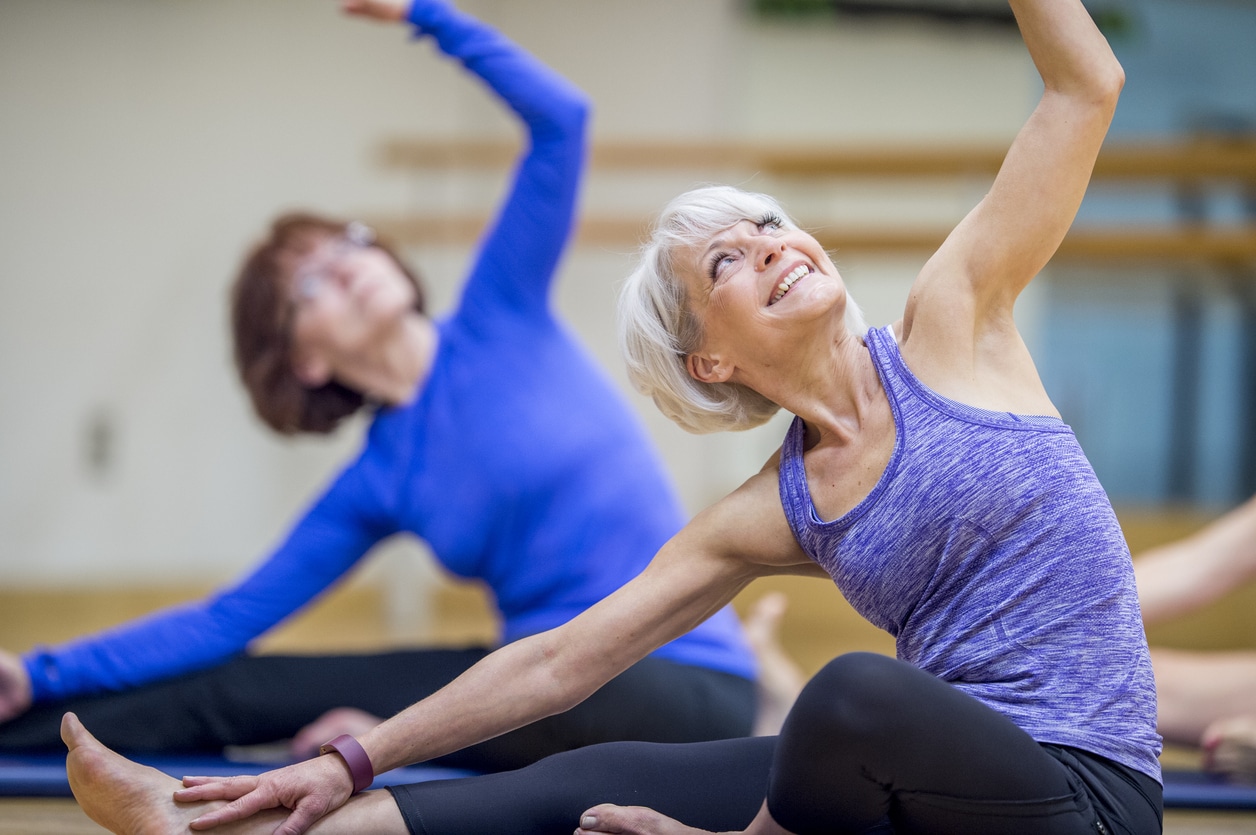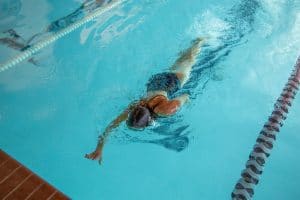
The Good News About Functional Fitness
Functional fitness involves using exercises that enhance and strengthen the muscles groups and movements we use in our daily lives. Much like a baseball player performs specific exercises to strengthen their lower back, shoulders, and arms to become a better hitter, functional fitness uses specific exercises to allow our muscles to work more efficiently when we complete the tasks we perform on a daily basis. For example, squats helps us get out of chairs or out of our cars and stretches help us to reach higher to grab something off a shelf.
The Framework of Functional Fitness
In order to use functional fitness exercises more efficiently, you need to have the basics. Balance and coordination are essential and go hand in hand, just like strength and power. Range of mobility and flexibility are also important. When you first start on your journey of regaining your fitness, you have to start slowly. Jumping in with both feet leaves your body unprepared and will often result in injuries that slow down your progress.
Stretching and using exercises that rely on your own body weight for resistance are the best way to start. When you swim, the water only applies the amount of resistance placed upon it, which makes it an ideal exercise for someone who isn’t as active as they should be. Stretching improves circulation and improves both range of motion and flexibility.
The Benefits
There are several benefits associated with functional fitness. One of the most important is that it helps you perform specific activities more efficiently. Strength and endurance are important, but they only go so far, especially if you have a specific goal in mind. Functional fitness gives you the ability to perform day to day activities without becoming drained or risking an injury that may put you out of commission for a long period of time.
For someone who has experienced a stroke or any type of devastating injury, functional fitness helps bring back your ability to perform tasks such as standing up from a chair, moving furniture, cleaning your home, or even doing simple yard work.
Exercises That Improve Function and Form
Swimming is the perfect exercise for improving both function and form. Not only does it use your weight as resistance, it encourages you to stretch as you move through the water. You regain strength, mobility, and flexibility without placing unnecessary stress on your joints or the injured areas of your body. A few of the best functional exercises include:
Curls – Curls for both arms and legs help to strengthen and tone the muscles, allowing them to perform more efficiently in terms of lifting, pulling, pushing, and putting things into motion.
Forward lunges – Helps build the muscles needed to climb stairs or inclines; also increases the flexibility of the hips
Side lunges – Keeps hip flexors toned and standing, turning, and pulling (great for when you run the vacuum or sweep/mop the floor)
Wall push-ups – Keeps the upper back and arms strong without placing pressure on the lower back
Overhead stretches – Reduces pressure on the spine, opens the rib cage and allows for easier breathing; also makes it easier to reach for objects in any direction
Dance! – While the other exercises are focused on improving the function of the muscles, dancing strengthens and tones, but at the same time also works the heart and lungs
Not every exercise has to be performed in a gym. Many people, women especially, don’t  exercise as they should because they feel that working out is only effective if it occurs in a gym setting. Not true!! Any activity can be turned into an exercise if you think about the mechanics and apply them properly. Vacuuming is an excellent multi-purpose exercise. 15 minutes of running a vacuum allows you to perform side lunges, front lunges, stretches, and dance. This is 15 minutes that consists of enough exercises to complete a full-body workout.
exercise as they should because they feel that working out is only effective if it occurs in a gym setting. Not true!! Any activity can be turned into an exercise if you think about the mechanics and apply them properly. Vacuuming is an excellent multi-purpose exercise. 15 minutes of running a vacuum allows you to perform side lunges, front lunges, stretches, and dance. This is 15 minutes that consists of enough exercises to complete a full-body workout.
The S.A.I.D. Principle
S.A.I.D. stands for Specific Adaption to Imposed Demand. What this translates to is simple. Exercises can be specifically adapted to meet the demands that are imposed on the body. Vacuuming uses different muscles than pushing a lawnmower. Climbing stairs will use a different set of muscles than those used for reaching for files across your desk.
Once you know the type of movements your body makes on a regular basis, you can identify exercises to help perform your day to day activities. The result is a lowered risk of possible injury and the ability to move without pain and discomfort.
Functional Fitness Principles
Functional fitness is based on a few solid principles that relate to how our body works as a whole. They include:
Principle 1 – The legs move the body. The legs are responsible for lifting us up when we are sitting or lying down and moving us forward (or in any other direction we choose to go). It’s imperative that they remain strong and flexible to prevent injuries that may slow you down.
Principle 2 – Rely on strength instead of outside support. The key is to make the body strong and resilient enough to move and function on its own volition without the use of braces, wraps, tapes, or other types of outside support.
Principle 3 – We move in three distinct dimensions or directions. The goal is to move seamlessly no matter what the direction. Our body moves up and down, side to side, and front to back, with almost every activity we perform. Going from one direction to another should be fluid and pain-free.
Principle 4 – Multi-functional exercises are best. The same exercises you use for climbing stairs will also assist you in standing up. The same is true for swimming or stretching. Each stretch affects multiple joints and muscle groups which in turn, assists with many different, day to day activities.
 The more you know about how your musculoskeletal system functions, the easier it will be for you to find exercises to help strengthen and tone the muscles you use the most. Using functional fitness exercises and principles will allow you to bring yourself back to a state of physical agility where performing your day to day tasks is much easier.
The more you know about how your musculoskeletal system functions, the easier it will be for you to find exercises to help strengthen and tone the muscles you use the most. Using functional fitness exercises and principles will allow you to bring yourself back to a state of physical agility where performing your day to day tasks is much easier.
No matter what your age or level of health, functional fitness will allow you to restore some of the strength you may have lost over time. It’s important to work with your doctor to ensure you are healthy enough to undertake any type of new exercise program. If you are just starting out, take it slowly and gradually build onto your routine as you feel yourself progressing. Get back into shape with the exercises that target the muscles you use the most. You will feel better and may actually start to enjoy your workouts!
The post The Good News About Functional Fitness appeared first on Prime Women | An Online Magazine.
